How to check what you can save by switching appliances

There’s a handy new calculator that helps show what you can save (or spend) when you change your appliances.
We’ve spoken before about the process of “electrification” and how much money a household can save by switching to energy-efficient appliances, an electric vehicle and solar power.
However, this advice is delivered in broad strokes that are difficult to refine down to your own unique situation.
Government-run Gen Less offers tools and stories to help New Zealanders use less energy.
Its home efficiency calculator lets you enter some basic information about your home to see the impact changes would have on your household.
When you head to the page, you’re greeted with a nifty video presented by Tom Webster of Grand Designs New Zealand fame. It’s worth a watch, not only to marvel at the level of detail in the scale-model home he interacts with but also for the breezy introduction to the topic.
How it works
Basically, it’s all incredibly easy. All you need to know is the number of people in your home and your postcode (there’s a link to look it up if you don’t know it). Then you add the energy source for your heating, hot water, cooking and driving.
As you select your current appliance and transport options, you receive the potential alternatives, along with the potential savings in both dollars and reduced emissions.
All you do is select the changes you’d like to make, or choose to stick with your status quo, and the calculator instantly tallies up your potential overall savings.
The results
I tried it for myself on our home. We just moved in at the start of the year. There are three of us living in a home with gas hot water and heating, an induction cooktop and my petrol-powered Commodore.
I know the hot water is on its last legs, so I selected a hot water heat pump – instantly, that gave me a saving of $1,100 per year.
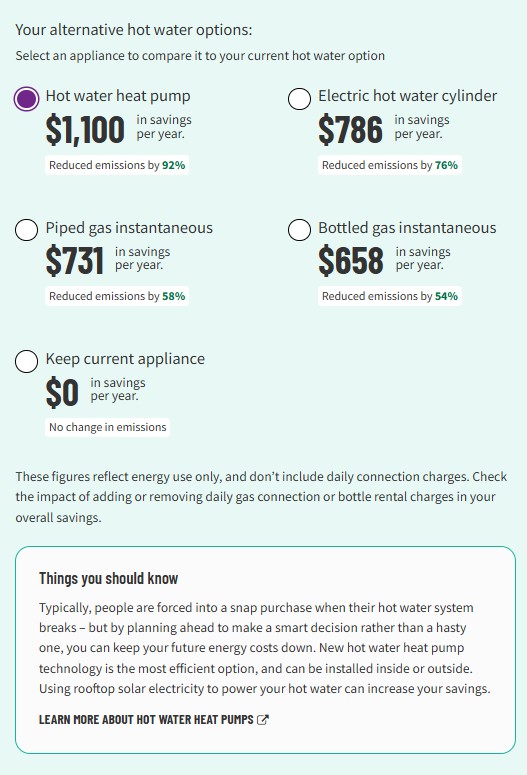
When the day comes that our hot water cylinder gives out, the last bastion of gas in our home will be the ducted central heating system that I fear using lest it bankrupt me over the winter. The $687 annual saving would be welcome if I swapped to a heat pump for that too.
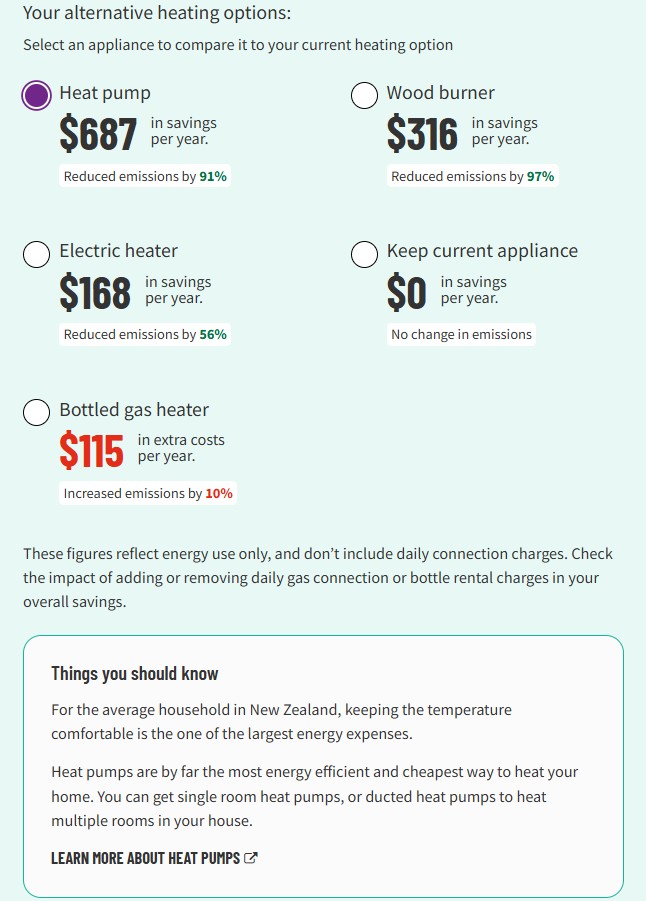
Since I already have induction, all the other cooking options would cost more should I choose to swap it out.
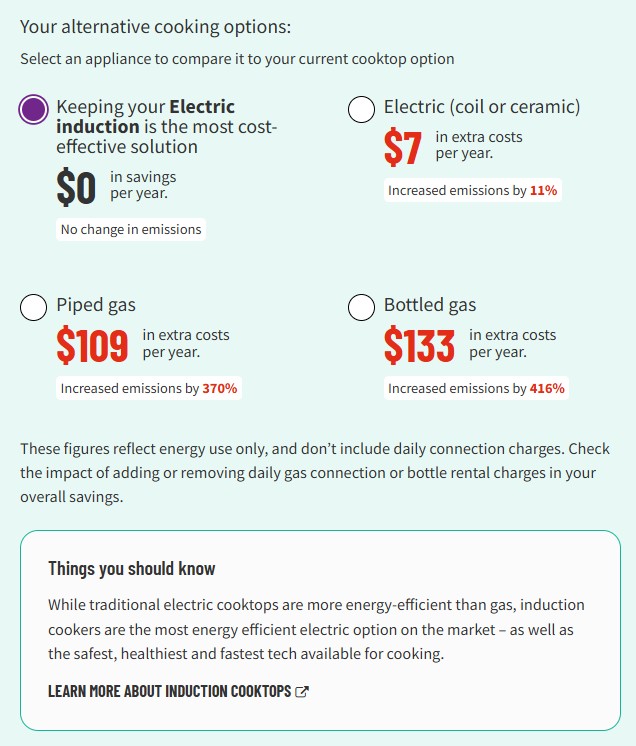
I’m not getting rid of my Commodore. It’s not due for replacement yet. That $876 saving is tantalising though.
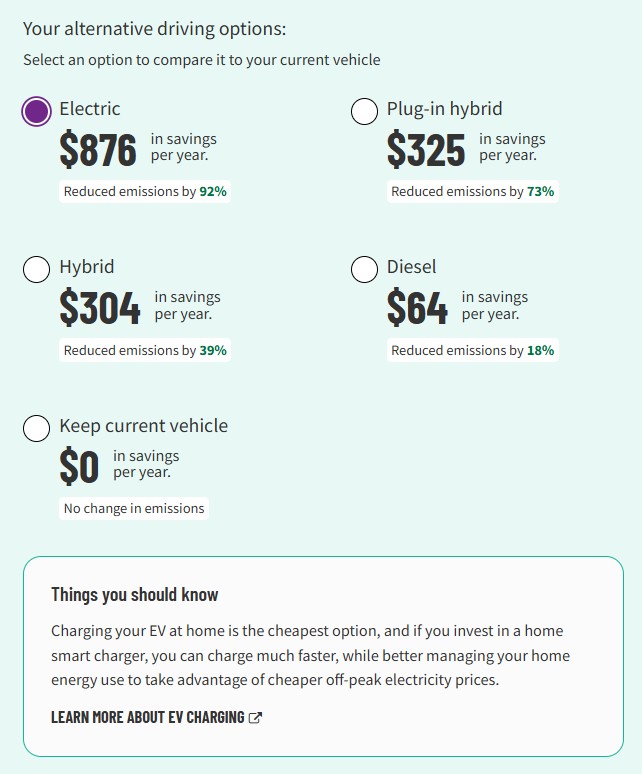
Lastly, the rooftop solar panel section shows your potential savings if you opt to have a system installed. You can then choose to have this calculation included in your final results.
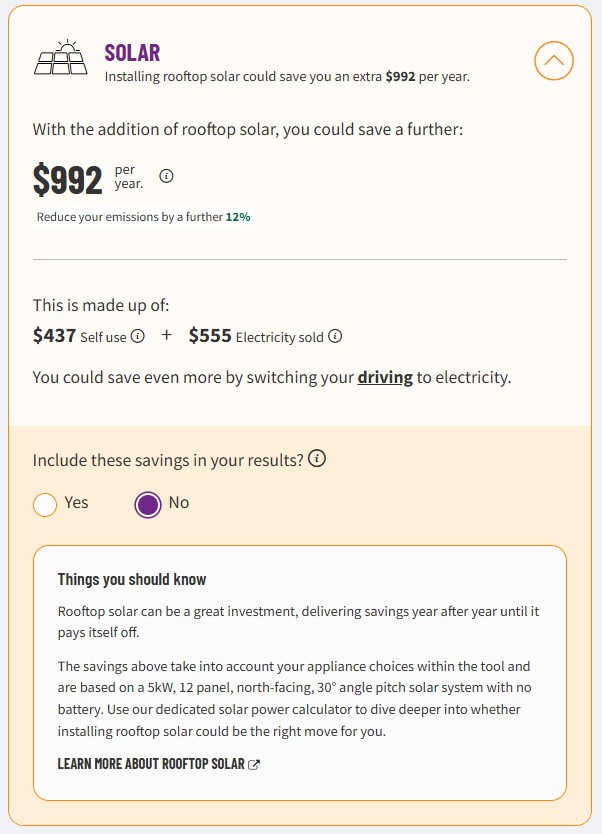
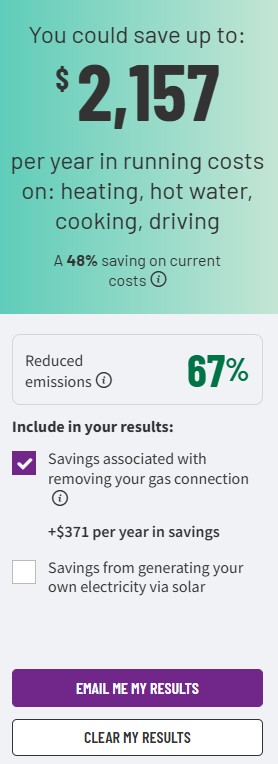
What’s the reality?
This sort of calculator is great for forward planning. It’s not about ripping out and replacing perfectly smooth-running appliances or vehicles; it’s more about identifying where you can make savings when those things naturally come up for replacement. I can see that a hot water heat pump would probably pay for itself within 6 years given current prices, and that makes the initial outlay less intimidating.
Things get a bit more expensive when I run the numbers for replacing our ducted gas heating system with a ducted heat pump. However, I do have to admit what got me with this one was the emissions reduction when swapping out the gas heating. I’m a dad now, and I’ve suddenly started developing an environmental conscience. The 92% reduction in emissions really struck me – I’m only here for a short while before I hand over the reins to this planet, best I try not make it worse.
About the calculator
There’s a lot of horsepower behind the calculator factoring in costs across the entire country. Gen Less are clearly proud of it, and if you really want to get into the nitty gritty, they’ve made it so you can have a nosey at the calculator's source code.

How to make your home energy efficient
We've got you covered with tips on choosing electric appliances, considering an electric vehicle, and even adding solar panels to your home.
Member comments
Get access to comment